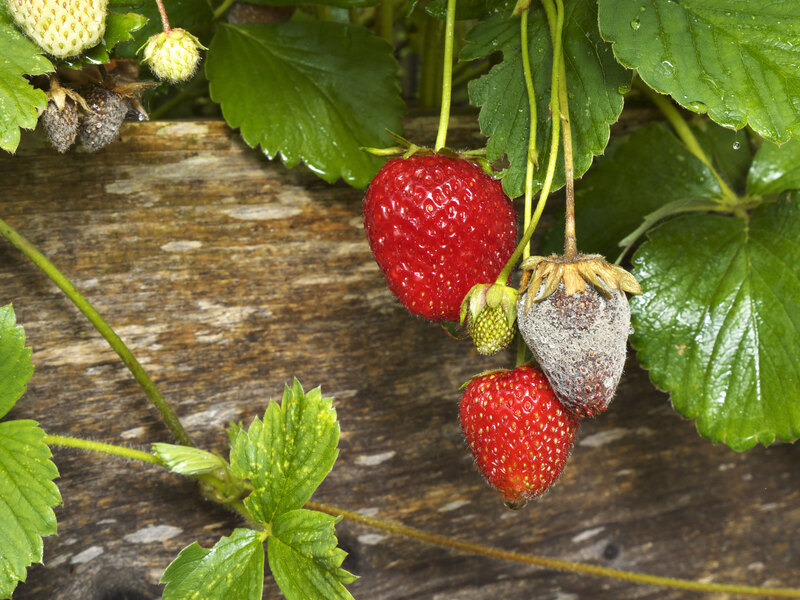A Botrytis infection can sometimes create conditions for other pathogens to strike. But it also works the other way around: there are pests that make it easier for the fungus to get a hold. It’s a sinister interaction.
Essentially, a crop is an ecosystem in which all living organisms interact. We capitalize on this system when using natural enemies. However, as a grower, you’ll also have to be constantly alert to the unwanted interactions: one pathogen can make it easier for another to strike.
This applies to Botrytis, too. When this fungus grows on a wound, the plant defends itself by creating antibodies. Although plants can fight off the fungus, that point of initial infection is left weakened. This is an ideal spot for other fungi, such as Fusarium, or bacteria to strike.

Hard to identify
Botrytis is a necrotrophic fungus: it lives off dead material. But this dead material is from the host plant cells that the fungus has killed. This creates spaces for other necrotrophic fungi to grow, such as Mycosphaerella. This combined infection can make it hard to identify the pathogen.
Insects as a sidekick
There are also pest insects that make life easier for Botrytis. By eating the crop or making holes in it, they create the entry points the fungus needs to strike. Several species of caterpillars, such as Duponchelia, are a good example of this. They cause substantial damage as they feed, creating the ideal access points for the fungus.
Sciarid flies, which alone don’t cause many problems, can transmit Botrytis from sick to healthy plants. If they go on to eat soft plant tissue, they create entry points for the fungus.
You should also know that some insects avoid affected plants. For example, aphids have a clear preference for plants that have not been infected by Botrytis.